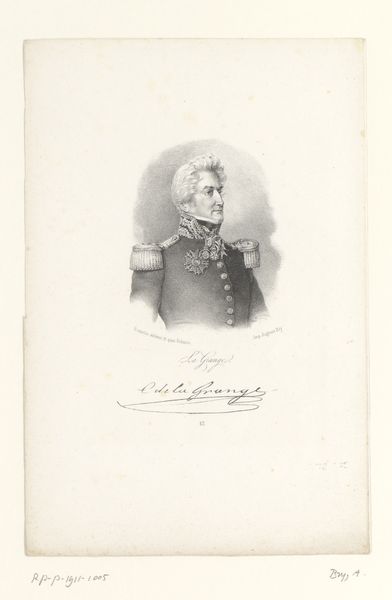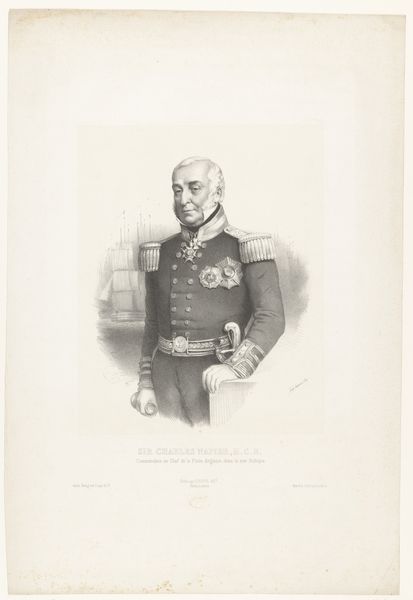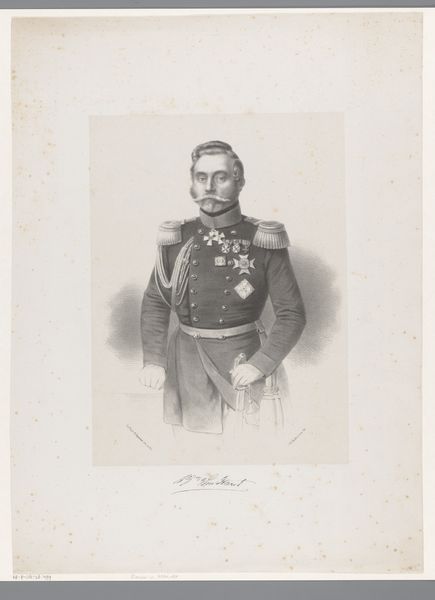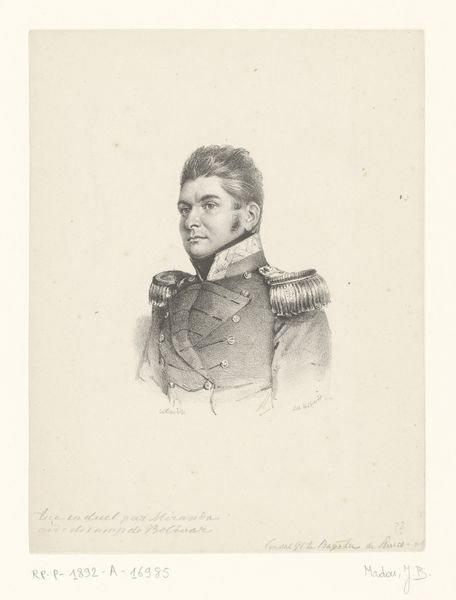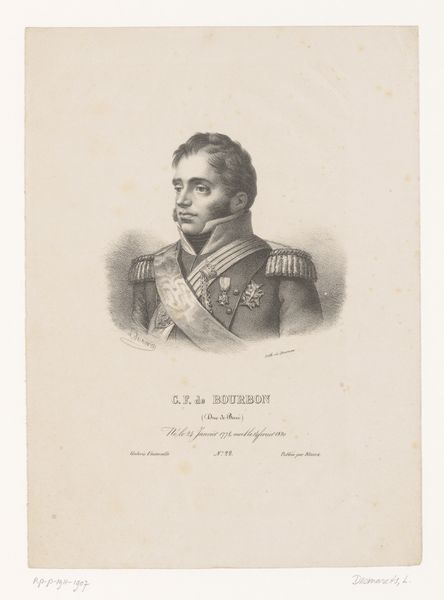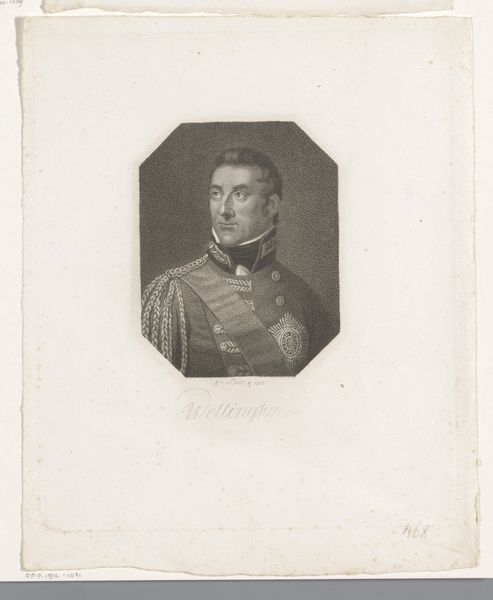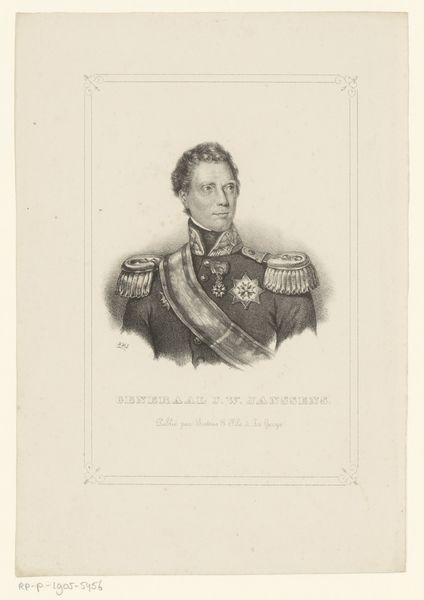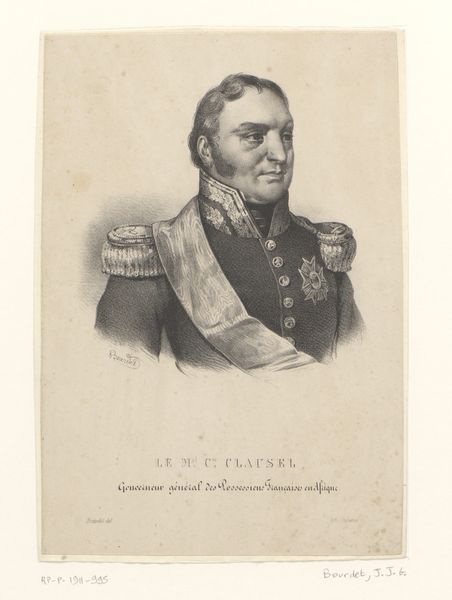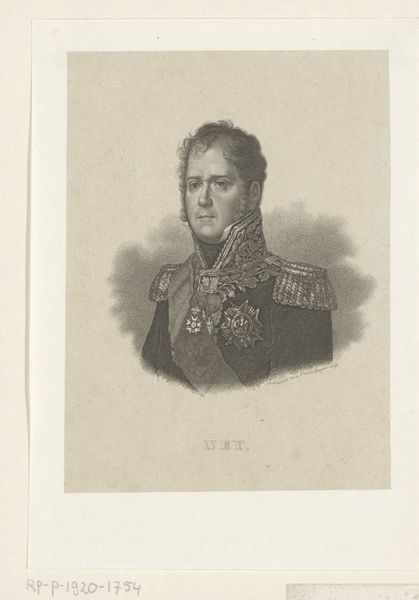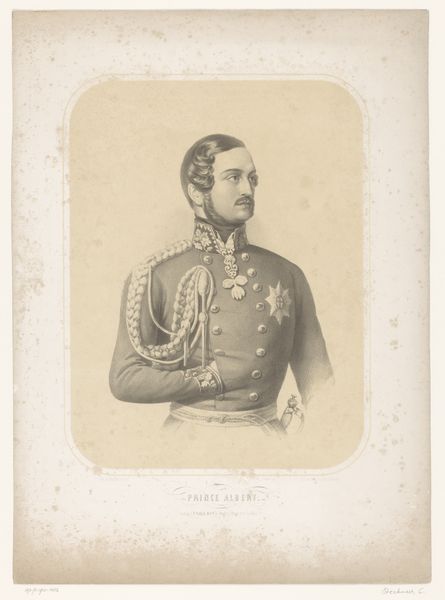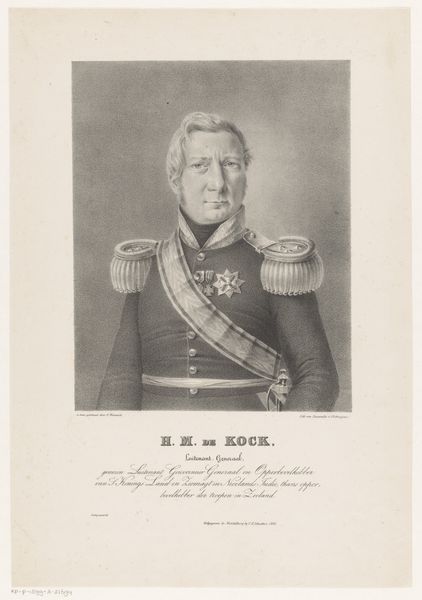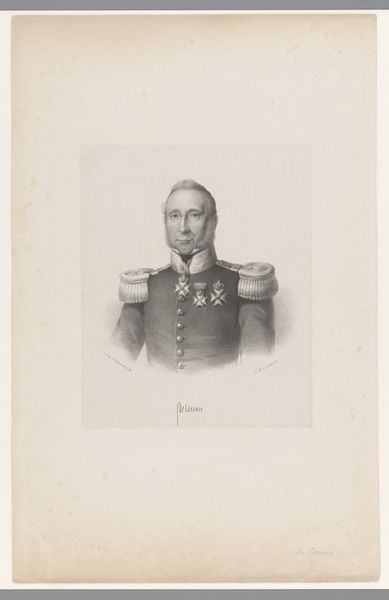
lithograph, print
#
lithograph
# print
#
history-painting
#
realism
Dimensions: 484 mm (height) x 361 mm (width) (bladmaal)
Editor: We’re looking at "Generaladjudant F.B. B\u00fclow," a lithograph print created in 1832 by David Monies. The subject has such a stoic expression. What strikes you most about the composition of this piece? Curator: The strength of this work lies in its skillful manipulation of light and shadow to convey a sense of depth and form. Notice how the artist uses delicate gradations in tone, particularly in the face and uniform, to create a three-dimensional effect on a two-dimensional surface. This lithograph achieves remarkable realism by employing techniques that emulate the precision of engraved lines, despite relying on the unique properties of lithographic stone. Editor: That's a great observation. How would you describe the realism style? Curator: Realism, as evidenced here, aims to depict the subject as accurately as possible. Focus not just on imitation but also on compositional arrangements. Consider, for example, the stark contrast between the subject’s elaborate military dress and relatively plain background. This helps to isolate him. And by examining its stylistic features and method of manufacture, we are given insight into the artistic practices of its time. What do you think about this idea? Editor: I agree. Breaking down the artistic style like that certainly makes me understand it more clearly. This exercise was very illuminating. Curator: I concur. Understanding art hinges on deciphering its intrinsic features; by scrutinizing these features, one may appreciate the complex web of meaning held within this image.
Comments
No comments
Be the first to comment and join the conversation on the ultimate creative platform.
